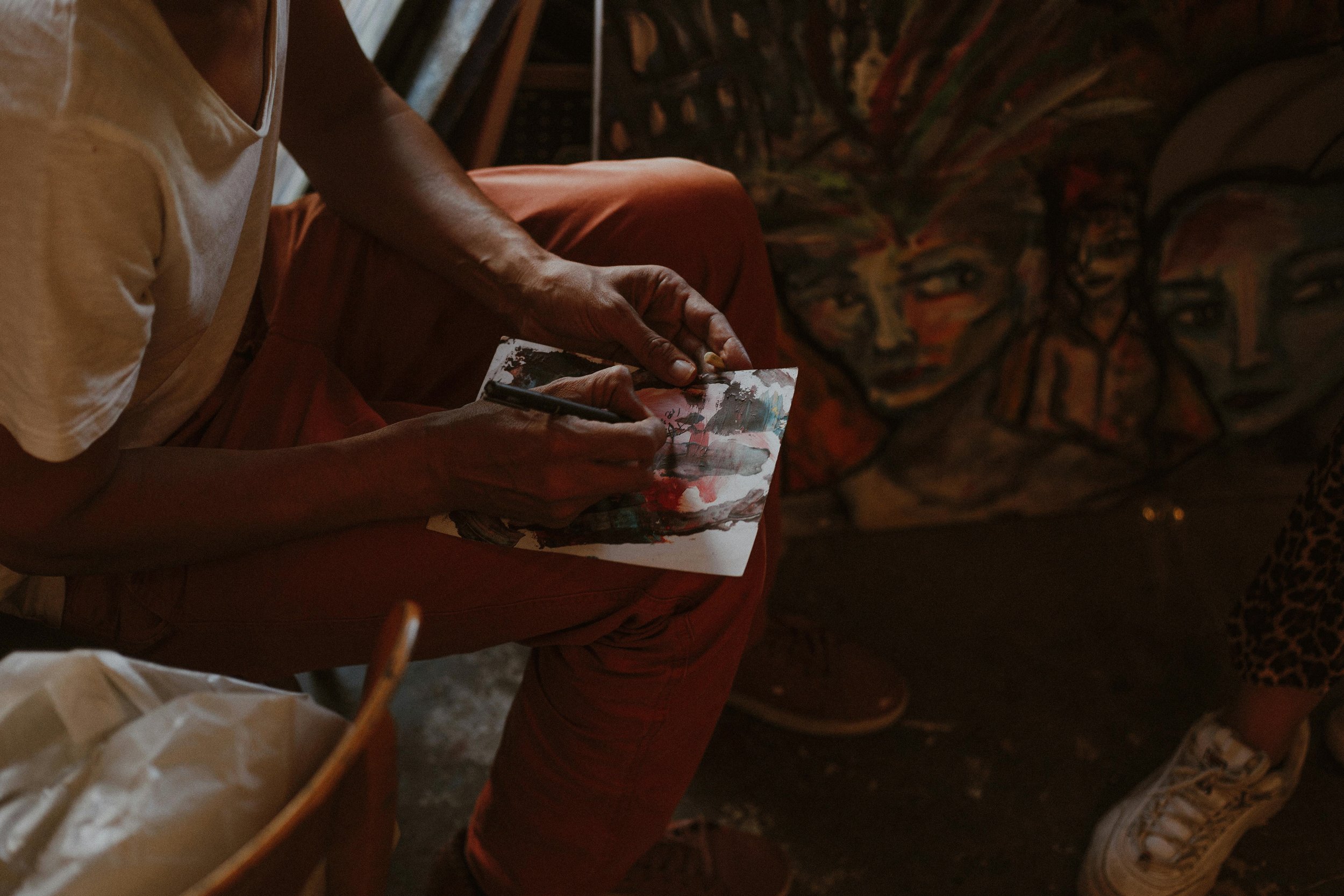The transformative power of art has long been acknowledged in various spheres of life, but its profound impact on health and healing is a narrative that deserves more attention. For Patrick Reiner, art became a lifeline during his battle with cancer, offering him solace, strength, and a way to cope with the immense physical and emotional toll of the disease.
His journey, detailed in his memoir, exemplifies how creativity can be a powerful tool in overcoming life's most daunting challenges. It is a story of resilience, the triumph of the human spirit, and the extraordinary healing power of art. For more on his inspiring journey, explore his memoir, Curing Cancer without Chemo.
Art: Its Transformative Power in Therapy
Patrick Reiner's road of fighting cancer was quite challenging at the beginning—he got a diagnosis that changed his life. With this harrowing realization, he was faced with the dilemma of sending the disease to its place or, at the same time, maintaining his psychological well-being. The utilization of traditional methods was part of his treatment course. However, together with it, he dealt with various alternative treatments as well, looking for enhancements to his medical support. Through this experiment, he learned about art as a therapy route.
The practice of art therapy is a well-known industry that relies on the creative process to help patients find an avenue for personal self-expression, stress management, and self-discovery. If it was anything for John, it was more than just an event; it was a psychological escape and a beacon of hope. Engaging in artistic activities became a source of bliss and a medium for releasing pent-up emotions. They allowed him to take his pain, fears, and frustrations and sculpt them into something one can touch and appreciate. He felt he was regaining his power when destiny was unjustified.
The Journey of Healing Through Creativity
By immersing in the arts, Patrick realized that the creative process of creating art matched the purpose of meditation. It is known that during painting, drawing, and other art forms, one needs to be focused and concentrated, both of which are the best means for diverting attention from anxieties and inconveniences. This process helped him change from a victim state to a survival one in some cases, and at the same time, it helped him develop a firm mental stance, which later turned out to be vital for his general health.
Through his artistic skills, Patrick managed to make his emotions visible, which were formerly hidden to him. The intimate experience of cancer—fear, anger, and sorrow, and yet his emotional moments—all these are multi-dimensional aspects, which are neither easy to comprehend nor deal with. However, Patrick, by his art, was able to transform these feelings, thereby issuing them a kind of external manifestation and tangible existence which they were deprived of when he could not. On the one hand, expressing himself through color and form was therapeutic; on the other hand, it helped him rationalize and set his emotions in order while going through a rough patch in his life.
Subsequently, his art was the venue for linking with people. When designing his art, he could sample a selection of stories, one for his friends, one for his family, and the other for the larger public. The channels, which remained open throughout the journey of creativity, were the relationships that became instrumental in Patrick's show of respect for life. Those with a structured lack of direction around life and love have had valuable moments. The dancer reconciled his frustration by involving the crowd in the act, which became an image of a transparent glass bridge between personal and public life.
The Impact on Recovery
A tremendous emotional toll was recorded on Patrick, with the aid of what followed, as he discovered how much benefit could be derived from his art. Managing creative hobbies, including participating in creative activities, aided in lessening his stress levels and improving his mood, which is a critical factor in general health improvement. He passed through the stages of stress released from his body through singing and dancing, a few things that can devastate him. Patrick's health was achieved through the same emotional and mental strength that he achieved with the help of art, which was majorly responsible for his ability to face his battle with cancer as determined.
Furthermore, the book about his story dealing with his illness is the most robust proof of how positively art was used. His unconventional approach to battling the illness helped many other patients resort to their own healing journeys through creative sources. His memoir serves as a beacon of hope for all those facing similar issues; it indicates that, apart from the difficulties, a path toward recovery can also be full of beautiful and meaningful moments.
Conclusion
In his bout with cancer and recovery with art, Patrick Reiner, a man who doesn't give in to despair, shows the limits of the human spirit's resilience. Art provided him with a means to cope, express, and heal.
His story confirms that the human spirit is limitless when we allow our creativity to be key. This true spirit of art is like self-expression through a painting and a powerful form of therapy that is also holistic, meaning that it works on the whole being.
But the most important thing we learn from Patrick's story is that in life, we have to give chance, say 'Hello!' to this unexpected place, and hope can appear in the face of the most difficult times in our lives. This has also been a very special journey for those who want to find other paths to help their health issues.
Art's power for healing affirms the striking influence of creativity on all aspects of our being. The book's overall message is not just that of a man who has fought cancer but that of everyone who faces part of the general hope of the ongoing spirit of the human being.













